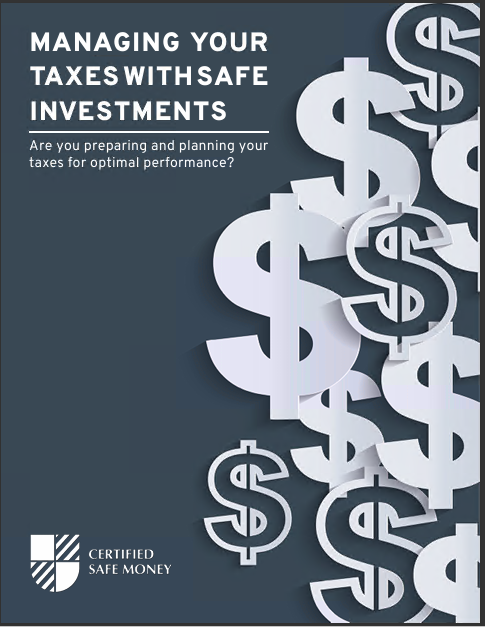Key Takeaways
-
Whole life insurance provides guaranteed protection and consistent returns over a lifetime, whereas ETFs offer flexibility and potential for higher gains.
-
Understand your financial objectives and risk tolerance clearly before choosing between the stability of whole life insurance and the dynamic nature of ETFs.
Stability vs. Flexibility: Understanding What Matters Most
When planning your financial future, two commonly discussed options are whole life insurance and exchange-traded funds (ETFs). At first glance, these might seem worlds apart, but they both play important roles in building and preserving wealth. To help you choose wisely, it’s crucial to understand four major differences between these two financial tools.
Difference 1: Guarantees vs. Market Exposure
Whole Life: Your Safe Harbor
Whole life insurance is designed for those who prefer predictability. When you buy a policy, you lock in coverage for your entire lifetime, along with steady, guaranteed returns. Your premiums are fixed, and the death benefit is guaranteed to be paid out, provided you maintain your policy payments. Additionally, whole life policies accumulate cash value that grows steadily over the long term.
This built-in stability makes whole life insurance attractive if your goal is financial safety and predictable outcomes. You don’t need to worry about market fluctuations since your policy performance doesn’t depend on external economic conditions. Essentially, whole life insurance acts like your financial safe harbor, giving you peace of mind.
ETFs: Riding the Market Waves
ETFs, however, give you exposure to the financial markets. Think of ETFs like diversified baskets of investments—stocks, bonds, commodities—that you buy and sell on the stock exchange. Your returns depend entirely on the market performance of these underlying investments.
This means your investments can rise significantly during strong economic periods but also fall sharply during downturns. ETFs provide potential for greater returns but come with higher volatility. They require you to accept the possibility of market-driven losses.
Difference 2: Investment Goals and Time Horizons
Whole Life: Designed for Lifetime Commitment
Whole life insurance is a long-term commitment. Generally, it takes several years—even decades—for your policy’s cash value to build significantly. Early withdrawal from the policy can lead to fees, reduced benefits, or losses.
Because of its long-term nature, whole life insurance is particularly useful for estate planning, legacy building, or providing financial protection for your dependents over a lifetime. If you are thinking decades ahead, whole life insurance aligns well with your financial strategy.
ETFs: Flexible and Shorter-Term Options
ETFs are flexible, making them suitable for both short-term and long-term investment strategies. You can buy and sell ETFs quickly, without significant penalties or delays, making them attractive if you prefer active investing or might need quicker access to your funds.
Because ETFs allow for rapid adjustments to your portfolio, they appeal to investors who prefer to respond swiftly to market changes or to reallocate their assets frequently to meet evolving financial goals.
Difference 3: Costs and Fees—What You Really Pay
Whole Life: Higher Initial Costs, Predictable Payments
Whole life insurance premiums are usually higher than other forms of insurance like term policies. However, these premiums remain constant throughout your policy’s life, allowing you to budget confidently.
Additionally, whole life policies often have upfront fees or commissions built into the premium. Over time, these fixed costs become more affordable relative to your coverage benefits, making whole life insurance predictable and stable, although initially expensive.
ETFs: Lower Costs, but Watch the Fees
ETFs generally offer lower expense ratios compared to actively managed mutual funds, making them an appealing option if you’re cost-sensitive. The expense ratio—the ongoing management fee—is typically modest, making ETFs attractive for investors aiming for cost efficiency.
However, ETFs do come with transaction fees every time you buy or sell, and these can add up quickly if you trade frequently. While ETFs are more affordable upfront, managing your activity levels carefully is necessary to prevent unexpected trading costs.
Difference 4: Tax Considerations You Can’t Afford to Ignore
Whole Life: Tax Advantages Built-In
Whole life insurance provides several tax advantages. Your policy’s cash value accumulates tax-deferred, meaning you won’t owe taxes on its growth until you withdraw it. Furthermore, your beneficiaries receive the death benefit income-tax-free, offering valuable peace of mind that your heirs are protected.
However, if you withdraw or borrow against your policy’s cash value prematurely, you could incur taxes or penalties, especially if the withdrawal exceeds your cost basis (the total amount you’ve paid in premiums).
ETFs: Tax Efficiency with Potential Pitfalls
ETFs can also offer significant tax advantages compared to traditional mutual funds. Their structure often results in fewer capital gains distributions, meaning you’ll likely pay less in taxes each year.
However, when you sell ETF shares at a profit, you’ll owe capital gains taxes. Short-term gains—profits from selling within a year—are taxed at your ordinary income rate, while long-term gains are typically taxed at lower rates. Therefore, it’s critical to consider your holding periods and the timing of your transactions to minimize tax burdens.
Deciding Between Stability and Growth
When deciding between whole life insurance and ETFs, start by clarifying your financial objectives:
-
Do you prioritize stability and long-term guarantees, or are you comfortable accepting risks for potentially higher returns?
-
Are you looking for long-term wealth preservation or shorter-term growth?
-
How important are liquidity and flexibility to your investment strategy?
Understanding your own financial personality can significantly ease your decision-making process.
Finding the Right Balance
Interestingly, choosing between whole life insurance and ETFs doesn’t have to be either/or. Many successful financial strategies blend both instruments:
-
Whole life insurance can serve as your financial foundation, providing security and protection for your loved ones.
-
ETFs can complement that foundation, offering exposure to broader market gains and growth potential.
A balanced approach helps reduce overall risk and provides a diversified financial safety net.
Your Financial Goals Dictate Your Choice
Ultimately, whether whole life insurance or ETFs fit better depends on your unique financial circumstances and goals. Take time to assess your personal comfort with risk, evaluate your long-term financial objectives, and understand the costs involved. Being clear about your preferences today can save you from uncertainty tomorrow.
When planning your financial journey, the key to making informed decisions is to stay aware, proactive, and clear about your priorities.
Plan Your Future Today
Now that you’ve clearly understood the differences between whole life insurance and ETFs, it’s time to act. Review your financial goals, talk with a financial professional, and take the next steps toward achieving financial clarity and security. Choosing wisely now ensures you’re well-prepared for whatever financial turns lie ahead.











